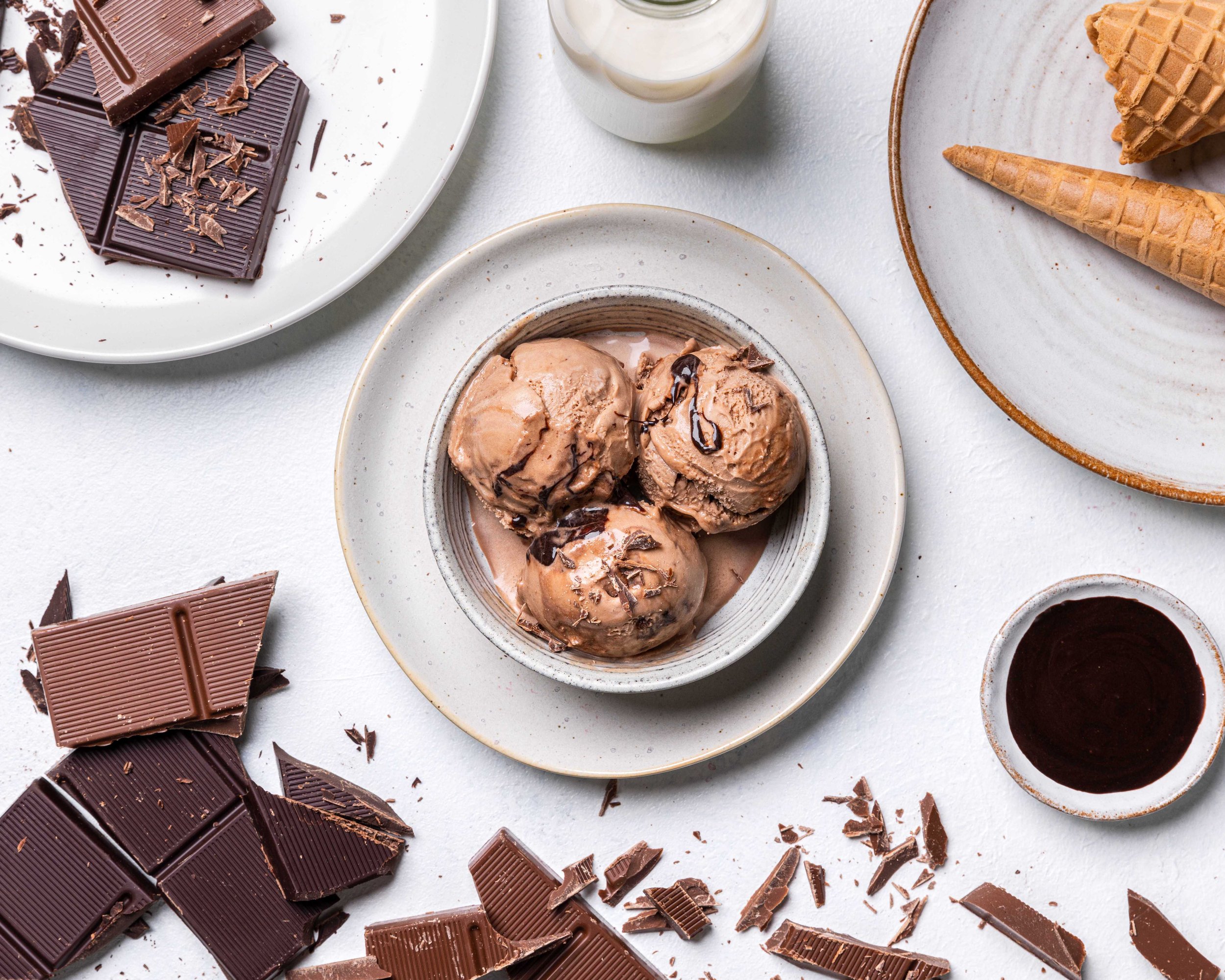
What Matters When Choosing Ice Cream
Making ice cream is both an art and a science - and we love it! Ice Cream looks simple, but don’t let it fool you, it's devilishly difficult to perfectly balance a recipe and to produce a great taste. Don’t worry though, we’ll do the heavy lifting so you can do the licking, and we’ve set out below some considerations to help you when selecting your ice cream:
-
Apart from the numerous environmental and nutritional benefits of organic milk, it means the milk is entirely natural, produced without the use of chemicals, artificial hormones, or antibiotics. As a result, we think that the milk is simply delicious. Organic milk makes up between 60-70% of our ice cream, it is the single most important ingredient in it, we think you should have the best.
-
We believe that nearly all natural foods are healthier and deliver a superior flavour and mouth feel. Ice cream is all about taste and enjoyment, and with our ice cream you don’t have to compromise as its all natural.
-
Using fresh ingredients also makes food taste better, ice cream is no different. We don’t bulk-buy our raw ingredients, we buy to order, so we don’t have stock sitting around. Instead, we make small batches of great tasting ice cream to order.
-
Mass produced ice cream is usually made with additives and artificial ingredients and can be kept in deep storage for extended periods of time, which can compromise flavour and quality. As an artisanal ice cream producer we seek a balance of excellent shelf life whilst maximising the best taste from a fresh product. We set an optimum best before date per flavour, that way you get to maximise storage time without compromising quality.
-
When you see crazy vibrant colours in ice cream, beware, it’s usually the result of unnatural food colouring. It’s understandable why ice cream producers do this. Customers often expect colours that match the skin of a food, for example yellow for banana even though a banana is white. We colour from nature to produce a better-quality product. Some flavours with natural colours are delicate such as our Strawberry Compote, which is a pale pink in ice cream, so we add beetroot. Likewise, our Mint Choc Chips ice cream is given a green hue with spirulina. We dose just the right amount to add colour but impart no flavour.
-
Well, it actually is a little bit like them in that aging definitely improves the quality. We age our ice cream for a minimum of 24 hours, and by doing so this allows the flavours to deepen while also enabling the molecules from the different ingredients to break down and improve the overall texture of the ice cream. Many producers skip this stage or do the minimum (usually four hours) to save time and money, but to us it is as essential as the ingredients themselves.
-
There are lots of steps involved in making artisan quality ice cream, and we believe in investing the time into each stage. Every batch of ice cream is firstly pasteurised, then flavoured, then aged (see above), then churned (some with inclusions like homemade caramel, cookies, etc), then blast frozen, and finally hardened in a storage freezer. Each stage is vital in miniaturising ice crystals and preserving flavour. We also do everything by hand, so we control the quality along the way.
-
They’re the same, aren’t they? Definitely not, we believe ice cream is a better-quality all-round product. Milk is important to both, but ice cream also includes a lot of cream (hence the name!), which is a lot richer than milk, but is more expensive. Gelato tends to skip the cream and go bigger on milk and sugar.
Our ice cream is American style hard pack, which means it's rich, smooth, and creamy with gorgeous dairy solids. It has a slightly chewy nature and a satisfying warm mouth feel. No ice cream headaches here! It delivers a long flavour profile and is great to eat all year round.
Gelato can be ‘stringy’ and malleable, due to the higher sugar content and less dairy solids, and therefore melts quicker. It does provide a quick flavour hit, but this disappears almost as quickly. It is best suited to hotter climates, like those in Italy where it originated from, but the recipes haven’t always travelled well to the UK.
The shelf life of good quality ice cream also tends to be longer, as it has more dairy solids and is therefore more stable.
-
It should be stored at -18oc or below. You should avoid leaving it out of the freezer for more than 5 mins at a time. If it is, it will begin to turn into a semi liquid state and small ice crystals will start to occur when you re-freeze it.
-
Allow your ice cream to soften slightly, ideally to -15oc or when you give the tub a squeeze it presses back a little. With your scoop roll your ice cream into a ball, don’t be tempted to dig, save that for your sandcastles! We recommend a non-mechanical single cast scoop that allows the warmth of your hand to warm up the scoop. We use a brand called Zeroll as they are perfect for hard pack ice cream. Dipping them in a little water will help you smoothly roll the scoop along the ice cream.
